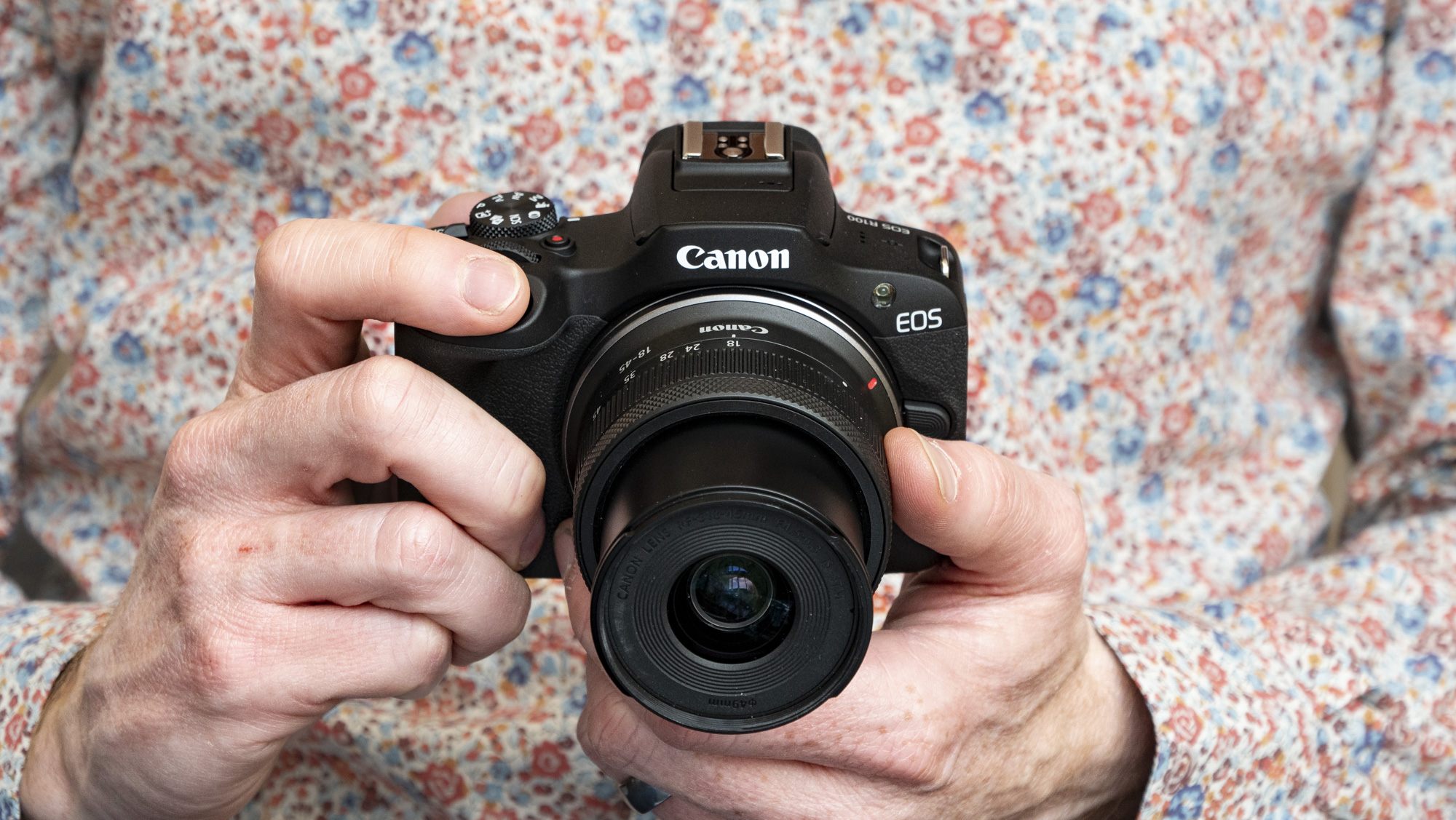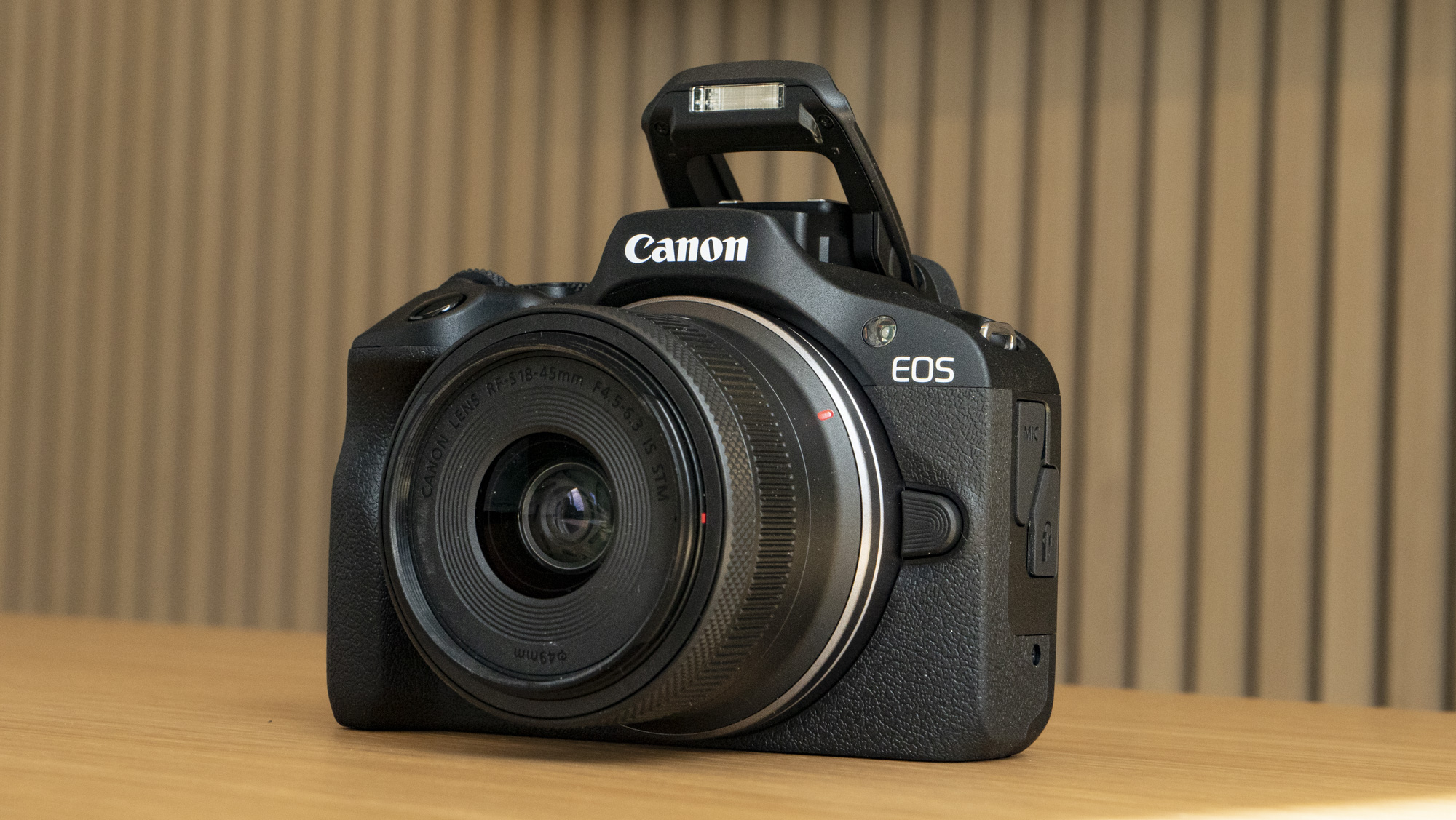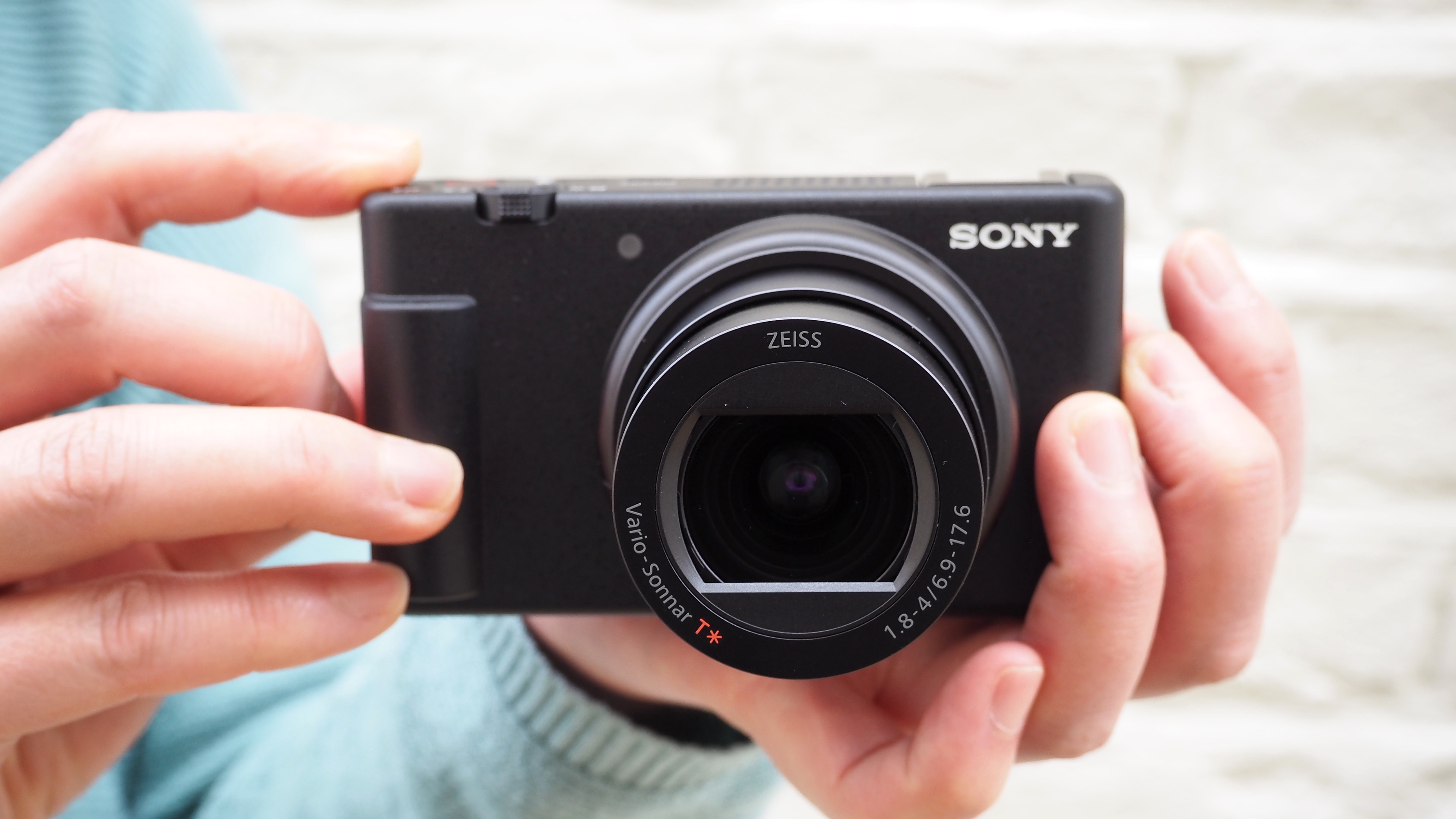This was the worst camera in 2023 (plus other dishonorable mentions)
The Canon EOS R100 felt particularly backward in 2023

There were no bad cameras from the big names in photography in 2023, but a couple of launches immediately spring to mind that had me asking, ‘Really?'. Top of that unremarkable pile was the Canon EOS R100, while the Sony ZV-1 II wasn’t far behind. There was also a tiny Fujifilm camera that’s a bundle of cute but technically not great.
When the EOS R100 was announced in May, I described it as ‘all out of touch with beginners’. That’s a play on words for the beginner-level mirrorless camera packing a fixed, rear LCD screen with no touch function. That’s right, you can’t flip the screen for selfies, or even use a touch interface on that screen. That’s why, in 2023, the EOS R100 feels backward.
Like I said, the EOS R100 isn't a bad camera. It has the same 24MP sensor as pricier Canon cameras like the EOS R50 and EOS R10, so it can give you equally good image quality – and we rate the EOS R10 as the best mirrorless camera for beginners. But for its intended audience, I couldn't sensibly recommend the EOS R100 because of its handling. I’d advise going for the pricier EOS R50, EOS R10, or other Canon entry-level models like the EOS M50 II or even Rebel T7i / EOS 2000D DSLR camera, instead. At the time of writing, those alternatives have more in their favor.
Canon EOS R100 – why so bad?

The EOS R100 is Canon’s entry-level RF-mount camera with the same APS-C sensor as pricier siblings like the EOS R10 and EOS R50, so it’s mostly good on the image quality front. That is unless you shoot video, as the EOS R100's 4K video has a meaty 1.55x crop so you can't shoot wide angle. That's an extremely dated video spec – the same as the EOS M50, in fact – and you’ll probably get better video quality out of your phone, at least until Canon starts launching better RF-S lenses.
You can, in theory, get the same picture quality with the EOS R100 as pricier Canon EOS R cameras, and in certain situations, Canon's latest lens mount outperforms previous M-mount and EF-S mount Canon systems. However, the camera’s handling feels at least a decade old, and the picture-making process will often be trickier.
For a little extra outlay, the EOS R50 is a much more compelling choice, with an articulating touchscreen and better quality 4K video. Even in 2023, Canon’s low-end models in the recently discontinued EOS-M series of cameras, such as the EOS M50 II, are more compelling options than the EOS R100.
I said that the EOS R100 should’ve followed the design philosophy of the EOS M200 – it’s a super compact interchangeable lens camera with a decent flip-up touchscreen and no viewfinder. Sure, its handling could be better, but it’s much more in tune with the intended audience – beginners. Instead, the EOS R100 is a DSLR throwback and there’s simply not enough that sets it apart. I’d go as far as to recommend an entry-level DSLR like the Rebel T7i / EOS 2000D over the EOS R100. At least you get a better lens choice and an optical viewfinder for a different experience in this digital age.
Sign up for breaking news, reviews, opinion, top tech deals, and more.
Is there any saving grace for the EOS R100?

For what you get, I also felt the EOS R100 at launch was a bit pricy, which didn't help matters. However, during the Black Friday sales, and even now in the festive season, it’s on sale for a much more reasonable price. At the time of writing, you can pick it up with the RF-S 18-45mm lens for $499 at Amazon in the US or £499 at Amazon in the UK. So that’s a step in the right direction.
There’s also poor lens choice for Canon’s RF-S cameras; the APS-C sensor models include the EOS R7, EOS R10, ESO R50, and EOS R100. The range is yet to have a native prime lens with wide aperture for shallow depth of field shots (though you could sensibly use the tiny full-frame RF 28mm F2.8 STM), but since the EOS R100 hit the shelves, Canon has launched the tiny RF-S 10-18mm F4.5-6.3, which is better than the EOS R100’s standard RF-S 18-45mm kit lens.
The rate of new RF-S lenses is a cause for concern, but at least there’s been some movement. Those concerns could be eased quickly if Canon opens its mount to third-party lens makers. That could happen in 2024. There’s certainly been a persistent call for Canon to do so.
There’s currently a good supply of the EOS R100 cameras, which is more than we can say for many cameras listed as out of stock or reserve – make of that what you will! Keeping that lower price and offering better lens choice will go a long way in increasing the EOS R100’s appeal, but neither of those affects the dated design of the camera itself.
Other dishonorable mentions

The Sony ZV-1 II is a different prospect to the EOS R100, being a compact vlogging camera, but it was barely any better in terms of progress. It’s the successor to the ZV-1 – which we rate as one of the best vlogging cameras – and even addressed ZV-1 users' top wish: a wider angle lens. Surely it’s all good, then? Well, you can see where this is going…no!
Sony took a step forward with a wider lens in the ZV-1 II, only to take two steps back by removing in-body image stabilization and effectively removing the benefit of the wider lens in this pocket video camera. Plus, it costs more. It was a baffling choice, and we couldn’t sensibly recommend the mark two version over the original – and it’s not often we say that.
I was charmed by the Fujifilm Instax Pal, describing the golf ball-sized camera as ‘a pocketful of fun’, but technically speaking it’s a very basic camera that could be described as poor quality. It also has the potentially unwanted effect of highlighting how good Instax Mini Link printers are to the detriment of Instax cameras. However, I think there’s enough in the Pal's favor; it's cute and unique, and should appeal to kids and families.
You might also like

Tim is the Cameras editor at TechRadar. He has enjoyed more than 15 years in the photo video industry with most of those in the world of tech journalism. During his time as Deputy Technical Editor with Amateur Photographer, as a freelancer and consequently editor at Tech Radar, Tim has developed a deeply technical knowledge and practical experience with cameras, educating others through news, reviews and features. He’s also worked in video production for Studio 44 with clients including Canon, and volunteers his spare time to consult a non-profit, diverse stories team based in Nairobi. Tim is curious, a keen creative, avid footballer and runner, and moderate flat white drinker who has lived in Kenya and believes we have much to enjoy and learn from each other.